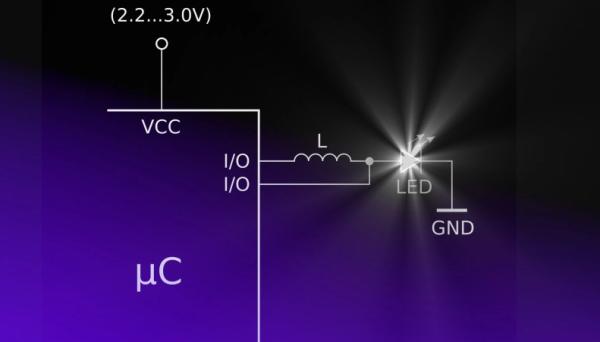There’s many a time when you want to connect a white LED to a microcontroller operating from a 3 V supply voltage. Unfortunately, this doesn’t work and your nice white LED only lights up feebly or not at all.

Why does it work perfectly with red and green LEDs, but not with white? A bit of data sheet research reveals the reason: white LEDs have a forward voltage of 3.2 V, so a 3 V supply is simply not enough to let them light up properly. The advice you often see in online forums is to use a boost converter to generate a higher voltage, along with a transistor switch to control the LED. For just a single LED, this seems like a lot of overhead.
The good news is that there’s an easier way. And it only needs one inexpensive component: an inductor, which costs next to nothing.
Operating principle of a boost converter
Take an inductor L (a coil) and connect one end to the input voltage UIN and the other end to a switch S tied to ground. When the switch S is closed, a gradually rising current flows through the inductor L, creating a magnetic field. When the switch S is opened a bit later the magnetic field collapses, generating an inductive voltage over the coil (Figure 2), the same as an ignition coil in a car.
Read more: ELEKTOR ARTICLE: LED BOOSTER FOR MICROCONTROLLERS
